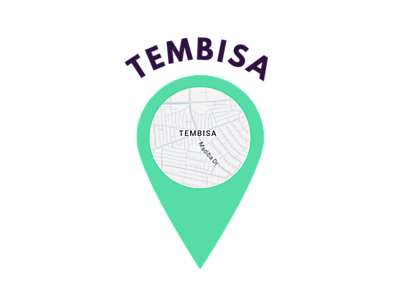Tembisa
Customer Relationships

In the Business Model Canvas, the Customer Relationships building block describes the type of relationships a business creates with different customer segments. In short, these represent the set of actions a company needs to take in order to grow and maintain its customer base.
Understanding customer relationships in the Business Model Canvas
In defining the ideal customer relationships, businesses should put themselves in their customers’ shoes. That is, what would they consider to be the ideal relationship? Would it be automated, personal, or somewhere in between? It is important to remember that consumers have certain expectations regarding the sort of relationship a business establishes with them.
Indeed, the quality of customer relationships has direct consequences for the customer experience. Organisations with consistently high-quality customer interactions across multiple touchpoints will be rewarded with devoted and brand loyal followers. These relationships can also be used to acquire new customers or upsell existing customers to boost sales volume.
Under this section of the Business Model Canvas, the business should consider the following questions:
- What type of customer relationship does each of our customer segments expect?
- Which relationships are already established?
- How much do they cost?
- To what extent are they integrated with our business model?
Six types of customer relationships
There are many different customer relationships types, with many co-existing within a single customer segment.
Here is a brief look at six of them:
- Dedicated personal assistance – in the first type, the business may assign a dedicated customer care representative who takes the time to understand the customer’s unique and specific needs. Banks and casinos employ this strategy to look after wealthy individuals.
- Personal assistance – perhaps one of the most common relationship types, where customers can interact with a single sales representative before making a purchase. Personal assistance also encompasses after-sales support.
- Self-service – where the business gives the customer everything they need to provide a service to themselves. Furniture maker IKEA is one example, selling flatpack furniture that must be assembled by the purchaser. Supermarkets and retailers that offer self-serve checkouts are another example.
- Automated services – essentially, this is a self-service relationship with automated processes that can identify specific customers and make tailored recommendations. Though automation will never replace a human touch, it can nevertheless provide excellent and efficient customer service.
- Communities – customer communities which the business owns and manages are also used to build relationships. Customers assemble to solve common problems and exchange knowledge, with this information used by the business to deepen its understanding of each segment. GlaxoSmithKline launched an online community for a prescription-free weight loss product. The pharmaceutical company wanted to understand the challenges overweight adults faced to better manage their expectations during treatment.
- Co-creation – where the business asks its customers to help them design a new product or service. This is a customer relationship that is highly beneficial for both parties. For the business, the inclusivity of the approach builds brand loyalty and trust. For the user, they get more say in a product designed around their needs.
Key takeaways:
- In the Business Model Canvas, the Customer Relationships building block describes the type of relationships a business creates with different customer segments. For best results, the business needs to maintain high-quality interactions with customers across multiple touch points.
- Customer relationships are designed around three major goals: customer acquisition, customer retention, and upselling.
- The six most common types of customer relationships include dedicated personal assistance, personal assistance, self-service, automated services, communities, and co-creation. One or several may exist in a single customer segment.
Sign in to add your comment.
Suggested Pages

Episode 28
Revenue Streams
Click the button to explore Kasi Kampus and enhance your business understanding with micro-learning modules.
Are you a Kasipreneur, or are you looking for opportunities?
Please click on the icon below, and fill out the surveyto tell us more about your business and how we can help.
Sign up to register your business. Click the button below.





